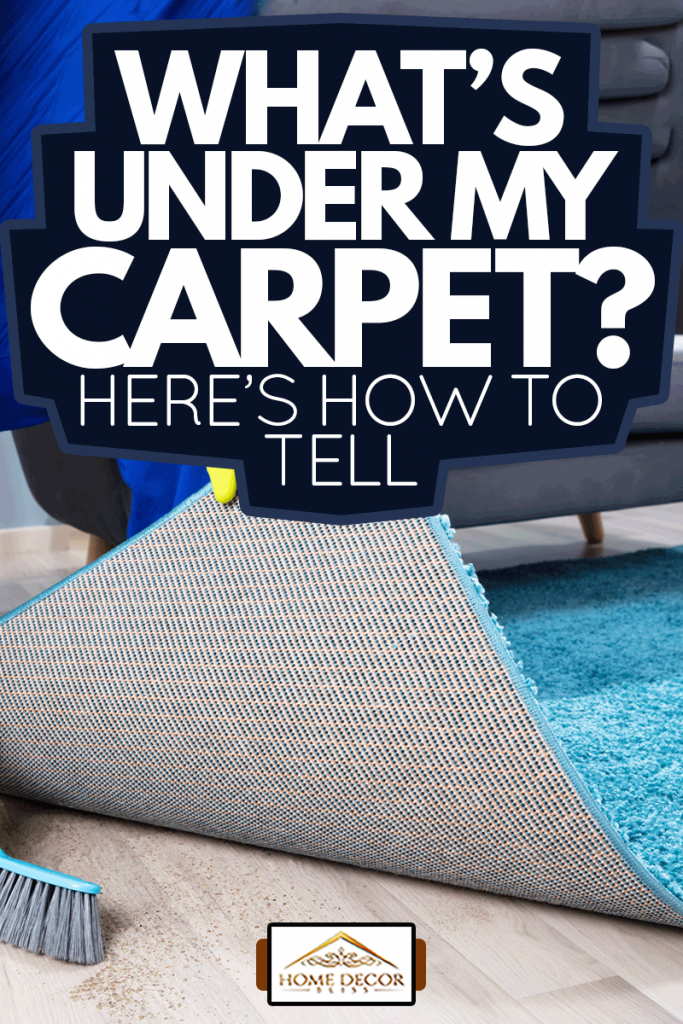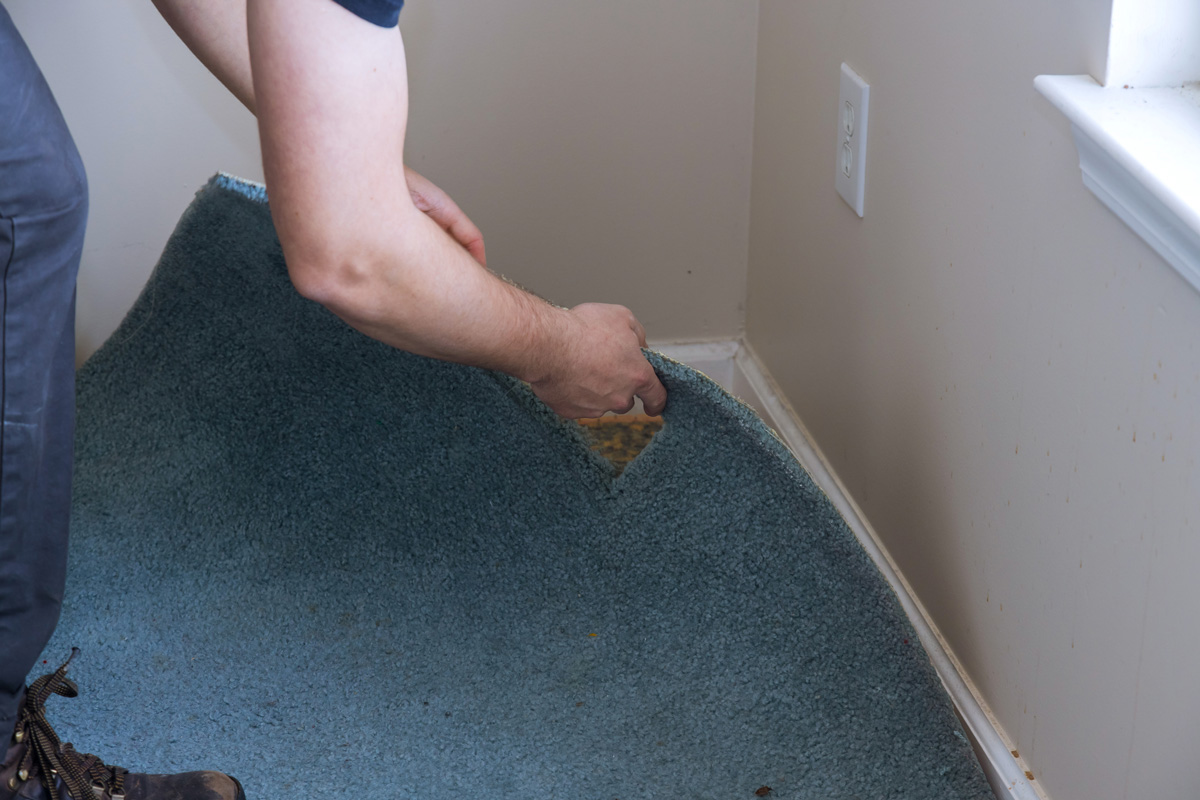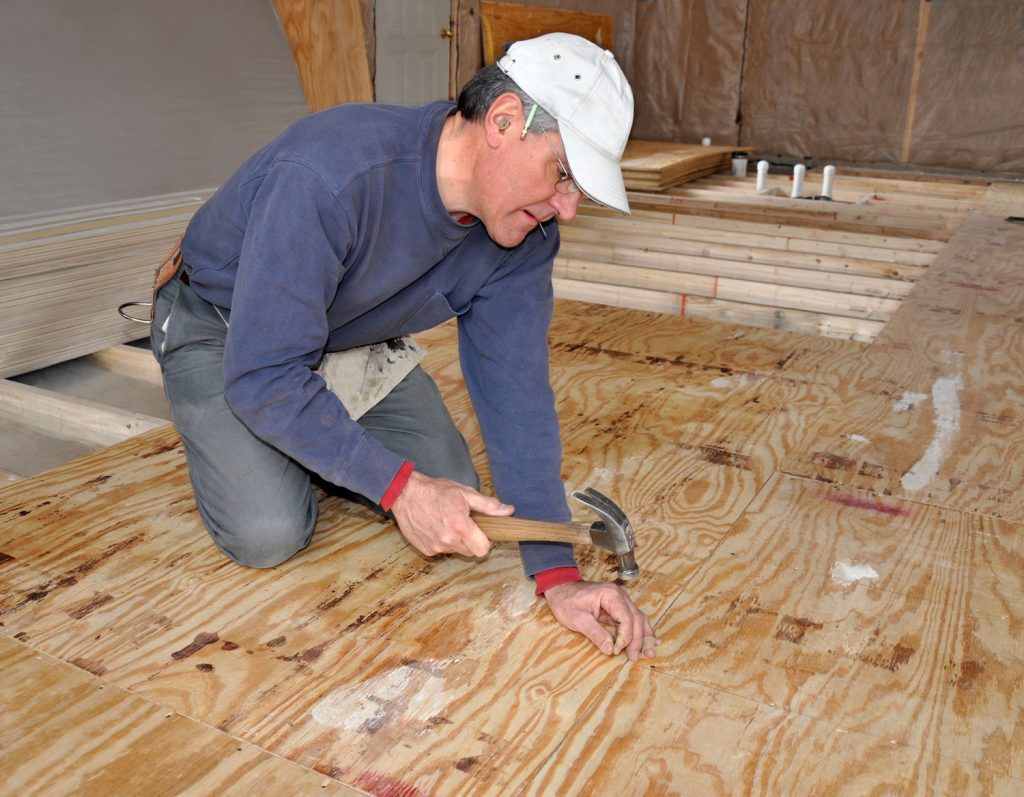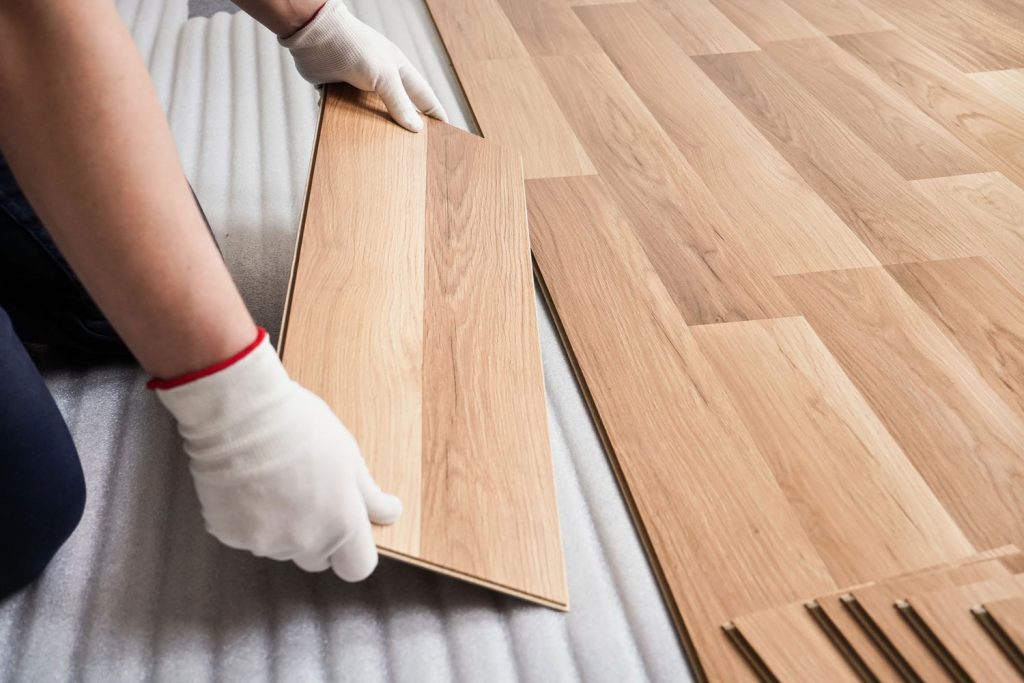It can be pretty simple to install carpet on many types of flooring, so you may need to determine what sits underneath it. Many times, this will be necessary when the flooring underneath your carpet needs to be fixed or replaced. So, we have carefully researched how to tell what different kinds of flooring might be under your carpet.
The most popular way to find out what is under your carpet is to peel back a corner of the carpet with pliers. You will likely have to peel up a corner of the underlayment as well. This will help you pinpoint what type of wood is underneath, even if you recognize squeaking wood. You may also have to remove baseboards, which could require more than basic tools.
Carpets are popular for their comfort and insulation, so it’s common for them to be installed over other floorings. Keep reading to learn what types of flooring are usually underneath, how to check for them properly, and tell if any hidden floorboards are rotting.

How do you lift a carpet to check for mold?
Specialists such as Guaranteed Property and Mold Inspection agree that mold can be a serious issue for your home and health. They explain that if mold is allowed to grow long enough, you should see it as blotches on the surface of your carpet.
However, it may also be detected by a musty smell. If you aren’t sure that mold is growing under your carpet, it can be crucial to find out. You can check for mold with the same method you use to determine the flooring underneath.

We may include affiliate links and curated AI content to highlight top design styles.
We may include affiliate links and curated AI content to highlight top design styles.
Step One - Remove Trim
Some walls have “baseboard” trimming that runs along the bottom. These baseboards protect the walls and help the edges of your carpet from coming up. So, you might have to remove these.
Click here to find this set of Putty Knives on Amazon.
Use a utility knife to score the top of the baseboards. Then, slide a putty knife behind the trim to separate it from the wall. Next, you can use a small pry bar to nudge the trim free.
Click here to see this set of Pry Bars on Amazon.
This will allow you to pull off the rest of the baseboard with an ordinary pry bar. This trim is traditionally fastened by small, thin nails called “brad nails,” which are easy to remove. In corners, you’ll have to do both baseboards that meet before you can remove one.
Step Two - Pull Corner
It will be best to use a pair of pliers. If you’re checking for mold, in particular, it’s often best to work on the corner nearest the suspected area. Use your pair of pliers to pull straight up on the carpet.
This technique is necessary because carpeting is usually installed with tack strips. These are long strips of wood with small, thin nails that secure the carpeting. Once you pull the carpet away from this, you are free to inspect the area underneath.
Step Three - Restore Carpet and Trim
Now, you can use your putty knife to tuck the loose carpet back into the corner until it is secure. Then, you need to remove the existing brad nails from the walls and any trim you removed.
Use your pliers to pull out the brad nails from your walls. Only pull from the backside of the baseboards. This will prevent any damage to the face because brad nails typically have no head.
Click here to find this Brad Nailer on Amazon.
Use a brad nailer to fasten the baseboards back into the wall. Do not nail them into the floor. Make sure to match your new brad nails with the existing holes so that your spacing remains correct.
You can also read our post Should You Glue Or Nail Baseboards? for more tips on properly installing baseboards into the walls.
Is there a subfloor under carpet?

As the name suggests, your subfloor is the lowest level of your home. It is usually plywood, and everything else must rest on this base. So technically speaking, there is always a subfloor under your carpet.
If you are checking a basement, the subfloor may not be made of plywood. These underground rooms require more stability, so they mainly use concrete rather than wood. And carpets are popular for basements, which are often colder than anything on the ground floor.
It is most likely that any basement carpet is sitting on top of concrete. This can be achieved by using strong adhesives rather than the traditional tack strips. You might require a special solvent to peel back the carpet from concrete.
You can check out our post, “Carpet V.s Laminate In A Basement - What To Consider,” to learn more about the benefits of carpeting in the basement.
Underlayment

Your carpet may not always sit directly on top of the subfloor. This is because of the underlayment, which is not necessary but highly popular. Some carpeting is even sold with a built-in underlayment.
The underlayment is additional padding underneath the carpet, and it’s usually made of foam. But it might also be made of other materials like rubber and cork. It is mainly used to protect the floor from water.
However, it can also be used to help insulate temperature and noise. It is also known to increase stability and comfort. You will have to carefully peel back the carpet and the underlayment to check the flooring underneath.
How to check floorboards under carpet
Most of the time, your carpet will be sitting on a subfloor made of plywood floorboards. You can often tell when the wood begins to squeak. Wood always expands and contracts during temperature changes. You may also feel softened areas of the wood through your carpet.
Again, you can use pliers to peel up any corner of the carpeting and the underlayment below. But this isn’t enough if you also mean to determine what kind of floorboards you have.

Laminate or floating wood floors are easier to distinguish than hardwood floors. They literally “float” on top of the subfloor rather than using nails. They achieve this by connecting with a tongue and groove system. So if your wood floor is nailed down, it is clear you have real wood.
You can double-check the species of the wood by reviewing its wood grain. You can tell that it’s natural because the grain is unique and should match the ends of the floorboards.
Also, laminate floors tend to take less damage than hardwood floors. Natural wood is often more sensitive, even with the strongest wood finishes.
How can you tell if floorboards are rotten?

It’s important to understand that floorboards rot because of moisture damage. Although many floorboards have a wood finish to protect the surface, an added layer of carpet may trap spills and leaks. Even with an underlayment, moisture can find ways to get in.
Experts like Water Damage Defense explain that lingering moisture allows fungi to grow. This fungus has the ability to break down the wood fibers, which weakens the floorboards. So, if you begin to notice signs of water damage in your flooring, then your floorboards may be rotting.
You will often be able to tell because of all the squeaking in real wood floors. Because they are nailed down, the expansion and contraction of the wood cause the nails to unfasten. However, this may not necessarily be from rot.
Fortunately, other signs may tip you off that your floorboards are rotten. For example, they are probably affected if they give when you step on them. The wood is weakened, so it is probably cracking or crumbling. The surface might be discolored, usually so that it is darker.
Summary
Carpets are unusually flexible and easy to install, so they tend to be used for covering up old floors. This can save the time and costs of removing old tile or wood. But it also means you’ll have to lift the carpet yourself to know what’s down there. It should now be clear how to do that and how to recognize mold or rotting wood. So, you can make sure your carpets don’t suffer from it again.






